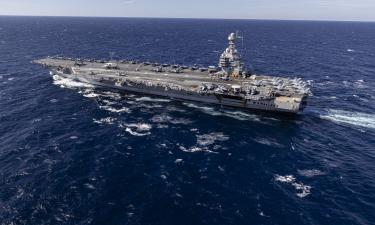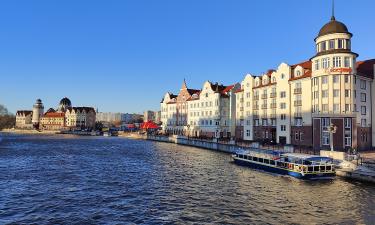Kursk Submarine Tragedy: Too Many Questions Left Ten Years After
Today, on August 12th, Russia is holding mourning ceremonies in honor of the victims of the Kursk submarine disaster, which shocked Russia and the whole world ten years ago, August 12, 2000. The tragedy, which took place in the Barents Sea, took the lives of 118 men. All fleets of the Russian Navy and military districts are holding mourning ceremonies today.

Flag will fly at half-mast on all Russian vessels and submarines. A moment of silence will be held at all naval units. Naval officials, relatives and family members of the Kursk victims will lay flowers and wreaths on the water surface in the Motovsky Gulf of the Barents Sea, the press service of the Russian Defense Ministry said.
In Moscow, ceremonies in memory of the Kursk submariners will take place near the Central Museum of the Russian Navy. Many Russian churches will hold services in memory of the victims.
Russia Today: Kursk submarine tragedy remembered
The governmental commission investigating the reasons of the Kursk disaster concluded that the submarine had sunk as a result of the torpedo explosion in the nose compartment of the submarine. It took the commission more than two years to investigate the reasons of the tragedy. Experts concluded that the submariners died 6-8 hours after the explosion.
Lieutenant commander Dmitry Kolesnikov decided to stay in the ninth compartment after the explosion and wait for help. The submariners knew that they were living the last hours of their lives.
"It seems that there are no chances. Maybe 10 or 20 percent," Kolesnikov's last note said, which he wrote on August 12 at 15:15 - four hours after the blast. Afterwards, the regenerative plate, which produced oxygen from carbon dioxide, exploded in the ninth compartment, killing the commander on the spot. Other submariners died soon afterwards because of carbon monoxide poisoning.
The reasons of the explosion in the nose compartment still remain unknown. Nineteen versions were investigated in total. One of the priority versions said that a foreign, most likely a US submarine, could have torpedoed the Kursk deliberately. Several weeks before the tragedy the submarine returned from the Mediterranean Sea, where it was watching US aircraft carriers.
Several US naval chiefs were dismissed soon afterwards. Rumor has it that the Kursk and its commander Lyachin became a serious enemy for the US Navy. Therefore, it could be possible that the US wanted to take revenge on the Kursk crew, the Rossiiskaya Gazeta wrote. However, there was no evidence found that could prove such a supposition. In addition, experts say that the Kursk was capable of withstanding a small nuclear explosion, not to speak of a torpedo.
The experts did not find any traces of external action on the hull of the submarine. There was a human factor version, no evidence was found to prove that the explosion had occurred as a result of inappropriate actions taken by someone of the crew.
The experts also found that the tragedy started with the explosion of the oxidizer compartment of the 650-millimeter torpedo. It was said that the explosion could occur only inside - it was impossible to act upon the device from the outside. It could probably be a factory defect, or something went wrong during the loading into the torpedo tube, the Rossiiskaya Gazeta wrote.
The nuclear-powered Kursk submarine sank on August 12, 2000 during military exercise in the Barents Sea. A non-official version says that the Kursk was torpedoed by USA's Memphis submarine. Insane rumors say that the USA wrote off either ten or even 118 billion dollars of Russia's debt after the death of the Kursk: one billion dollars per each member of the crew of 118 men.
Twenty-three submariners survived on board the sub after the explosions. They moved to the ninth compartment. Commander Dmitry Kolesnikov left several notes, one of them was addressed to his wife Olga.
Subscribe to Pravda.Ru Telegram channel, Facebook, RSS!




